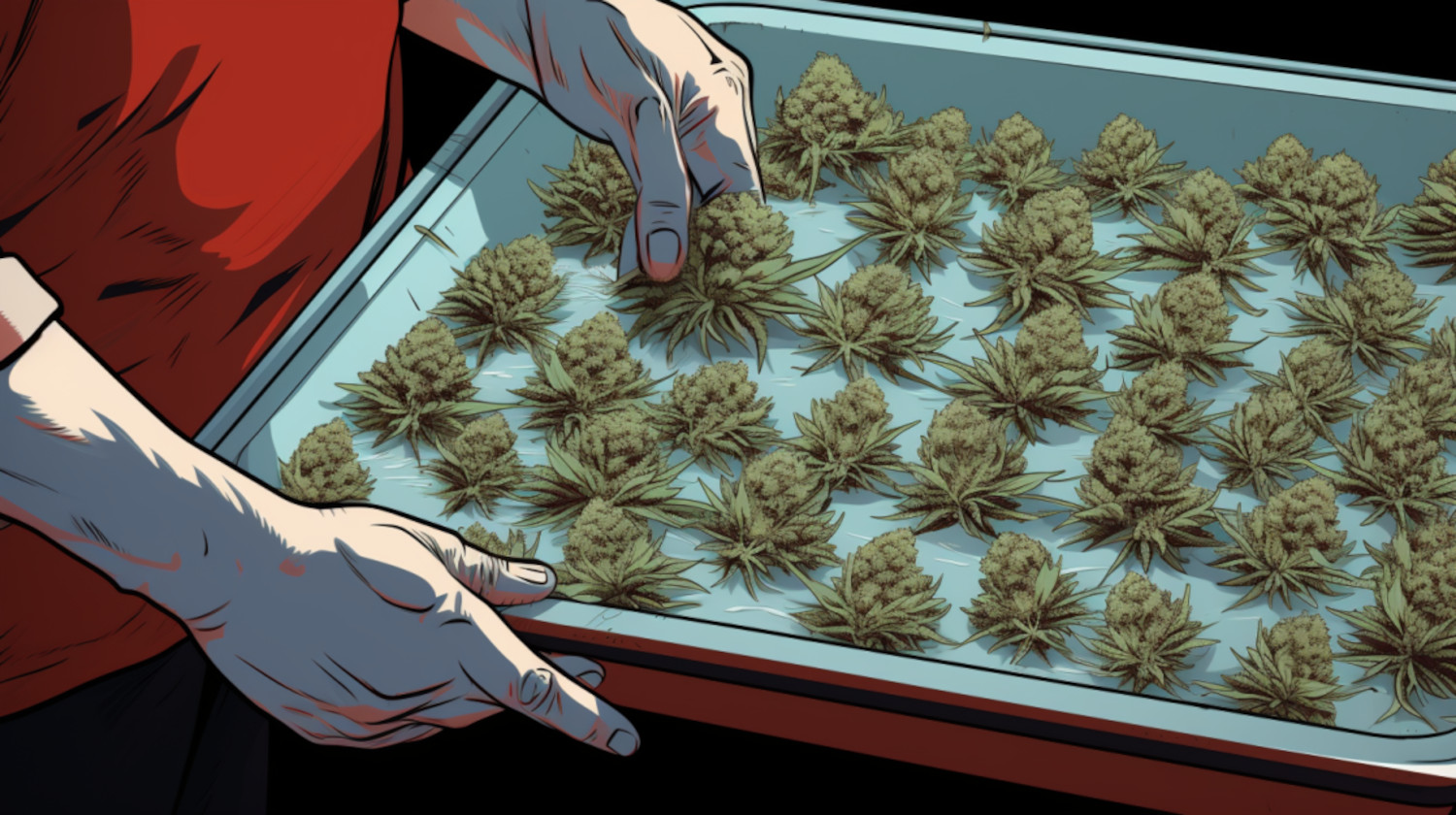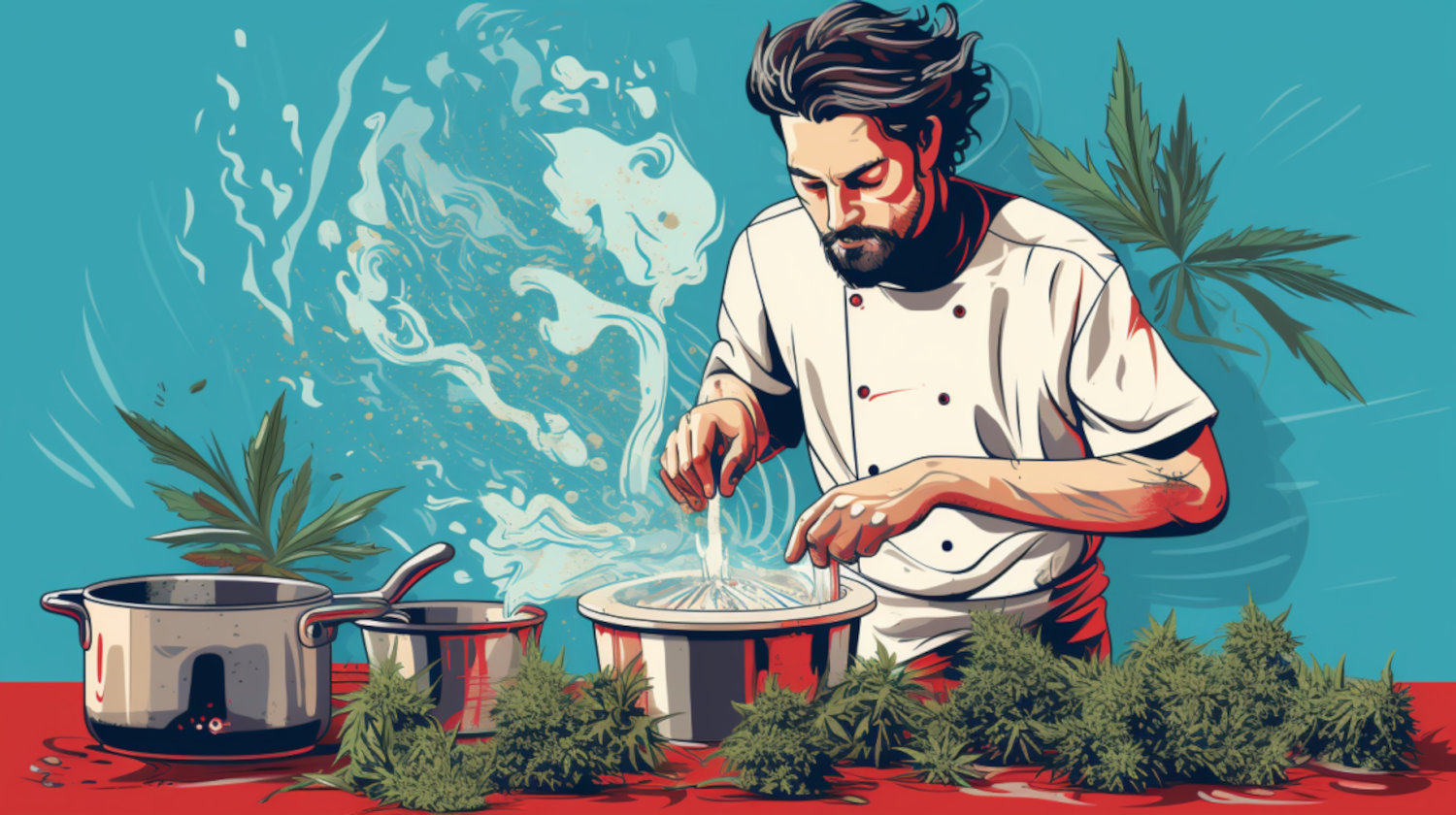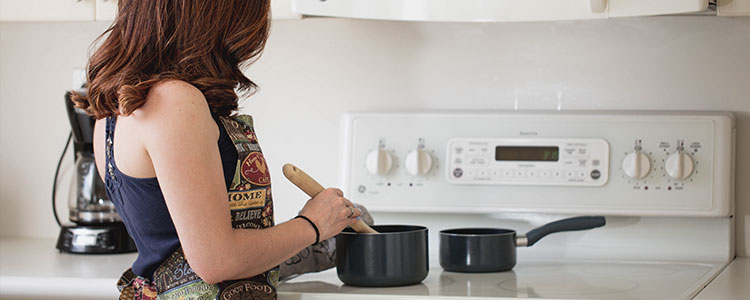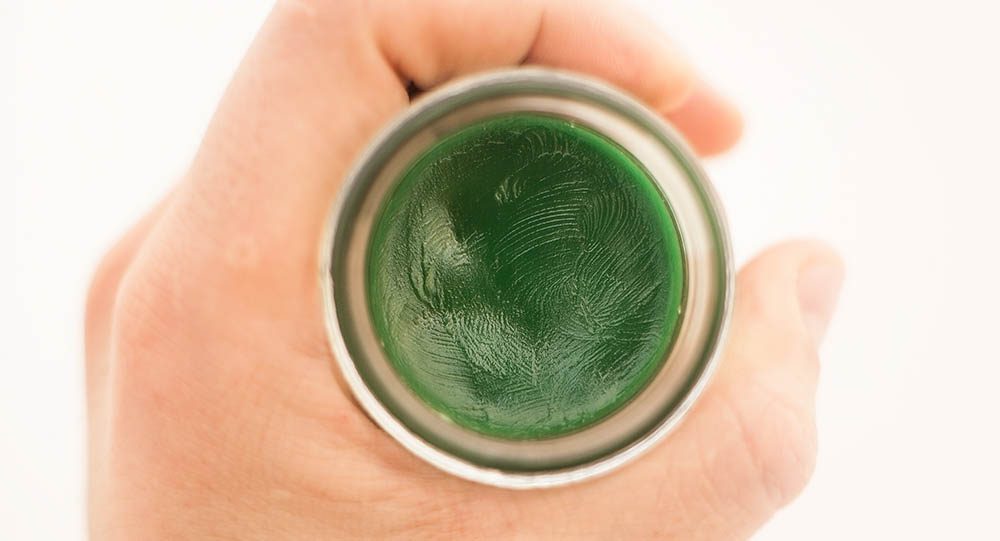With the ongoing legalization of recreational and medical marijuana throughout the country, more cannabis products are available than ever.
Even so, some cannabis-derived items like edibles can easily be made at home. There's no need to head to your local dispensary to find some tasty weed brownies or candies when you can make them yourself!
But cooking with cannabis isn’t as simple as throwing some nugs in a pot. Unless you decarb your weed ahead of time, your cannabis dish will lack the effects you crave.
Many people (especially marijuana newcomers) are unaware of the decarboxylation process and why it's necessary when cooking with cannabis.
Keep scrolling for everything you need to know about decarbing weed, from why it's essential to learning how to decarb your cannabis at home today.
What is Decarboxylation?
Decarboxylation is an essential process for activating the cannabinoids in marijuana so that they can be consumed in products like edibles and cannabis-infused oils.
In short, decarboxylation (or "decarbing") involves heating up the cannabis flower so that the THCA and CBDA naturally found in the plant will convert to THC and CBD.
When you smoke cannabis, the heat converts THCA into THC, delivering the iconic intoxicating effects many consumers search for. Before heating, the majority of the THC is trapped as THCA. This is why, if you were to eat raw marijuana flower, for example, nothing would happen (except maybe a stomach ache).
Unlike smoking flower or vaping cannabis concentrates, edibles are consumed without heating. That’s why, before you can turn cannabis flower into effective edibles, they'll need to be decarbed.
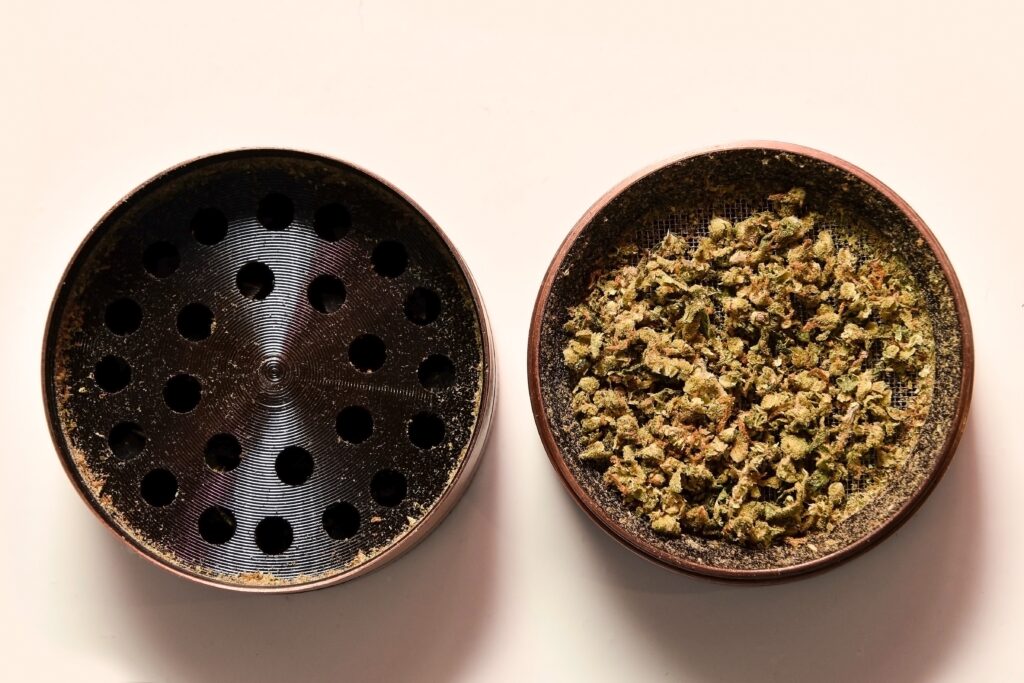
So, how does decarboxylation convert naturally occurring, non-intoxicating THCA into intoxicating THC?
When cannabis flower is heated up, the molecular structure of the natural cannabinoids transforms. In short, THCA (or CBDA) releases one carboxyl group.
Let’s get a little technical. A carboxyl group, or COOH, consists of carbon dioxide (COO) and hydrogen (H). Therefore, when it loses a carboxyl group, it loses its carbon dioxide while keeping a hydrogen atom. While this may seem like a subtle change, removing just three atoms in the form of carbon and oxygen, the molecular mass of THCA is reduced by over 10%. In doing so, THCA transforms into THC, which your brain and body can then process to produce its well-known and highly sought-after physiological and intoxicating effects.
The body’s endocannabinoid system (ECS) is a series of connected cannabinoid receptors. Cannabinoids such as THC, CBD, CBG, and others are similar to our own naturally occurring endocannabinoids, so they can bind to the body’s cannabinoid receptors and produce various effects.
Why Do You Need to Decarb Weed?
Believe it or not, fresh marijuana flower contains little THC or CBD. These highly sought-after cannabinoids are converted from THCA and CBDA, respectively. Decarboxylation converts CBDA and THCA – two cannabinoids that can’t bind to the body’s cannabinoid receptors – into CBD and THC, which can produce many of the desired physiological and intoxicating effects.
You only need to decarb weed when trying to make your own edibles, tinctures, oils, or other consumable cannabis products. This ensures your finished dish has the desired effects.
You don't need to worry about decarboxylation when smoking or vaping weed. The decarbing process, in a sense, is already happening when you heat the product for inhalation.
How Long Does it Take to Decarb Weed?
Cannabis flowers contain dozens of terpenes and cannabinoids that react differently to various temperatures. Depending on the temperature, it can take 25 - 45 minutes for your weed to decarb.
The ideal temperature to preserve the most THC is between 230-250°F, typically for 25 - 30 minutes. This temperature range will preserve and activate many cannabinoids and terpenes without destroying them. If you start at a higher temperature or leave the flower in the oven for much longer, you risk burning the cannabis and eliminating the THC you’re trying to preserve.
At 220ºF, THCA will start to transform into THC. On the other hand, CBDA will only begin to decarb at 245ºF. Likewise, If you are decarbing hemp or CBD-rich strains of cannabis, you’ll need to set aside additional time since CBDA takes longer than THCA to decarb.
The table below from a 2016 study out of the University of Mississippi analyzed various times and temperatures to decarb THCA and CBDA.
| Acid/Cannabinoid | Temperature (ºF) | Temperature (ºC) | Time (in minutes) |
| THCA/THC | 230ºF | 110ºC | 30 |
| 265ºF | 130ºC | 9 | |
| CBDA/CBD | 230ºF | 110ºC | 45 |
| 265ºF | 130ºC | 20 |
How to Properly Decarb Weed
While decarbing may sound like a complicated process, the truth is that properly decarbing weed is actually really simple!
There are You can try several methods job. The most effective is to use your oven, though you can also use a microwave or stovetop.
Since decarboxylation requires precise temperatures and “cooking” times, we recommend using your oven because you can easily control the temperature and decarb your weed for the perfect amount of time.
How to Decarb Weed Using Your Oven
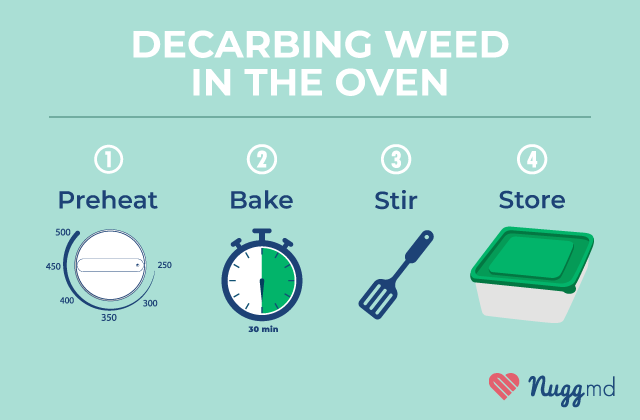
- First, preheat your oven to 250°F,
- Next, cover a baking sheet or dish with parchment paper or aluminum foil,
- Break up your dried and cured marijuana onto the parchment paper or aluminum foil. You should avoid grinding the marijuana because if it is too fine, it is more likely to burn than decarb.
- Once the oven is preheated to 250°F, place the baking sheet and cannabis in the oven for 25-30 minutes. If you’re concerned about losing terpenes in your favorite strain, you can bake the cannabis at a lower temperature for more extended periods. For example, 45 minutes at 230°F.
- Halfway through the baking time, lightly stir the plant matter on the baking sheet using a spatula or wooden spoon.
- After 25 - 30 minutes, remove your baking sheet from the oven and let the cannabis flower cool. If decarbed correctly, the flower should look light brown or golden in color.
- Once cooled, place all the decarbed weed into an air-tight container and store it in a safe place that is cool, dry, and dark. Exposure to light will cause the THC you worked so hard to decarb to lose its potency, and excess moisture can produce mold.
That’s it! You're now ready to use your decarbed weed to make edibles, tinctures, oils, or any other consumable cannabis product you want! However, we recommend using your stash of decarboxylated cannabis within 3 months, as cannabinoids can lose their potency and degrade over time.
Pro tips: If it smells like your flower is burning at any point during the process, turn down the temperature. And remember that THCA decarbs significantly faster than CBDA. So, if you're decarbing hemp to make CBD edibles or tinctures, allow the flower to sit in the oven for twice as long.
Lastly, keep in mind that decarbing in the oven can leave your house with a distinct cannabis odor. So, you may want to leave the windows open to help air out your kitchen.
How to Decarb Weed Using Your Microwave
Using a microwave can be less effective and reliable than using an oven. But that doesn't mean it can't do the job in a pinch.
One benefit is that decarbing weed in the microwave will take significantly less time than baking it in an oven. Still, it will require a little more work to ensure the weed decarbs properly.
Here's how to decarb in the microwave:
- First, grind up or break apart your weed and place it in a microwave-safe bowl.
- Place the bowl in the microwave and cook on high for approximately 1.5 minutes.
- Remove the bowl and examine the cannabis flower. Be sure that none has burned and that it has a pungent smell. Give the flower a stir and microwave for another minute.
- Repeat as necessary.
Another challenge of using a microwave is that your flower may not turn into the golden-brown color produced by the oven, making it more challenging to determine when the cannabis has been sufficiently decarbed.
Can You Decarboxylate Weed in the Microwave?
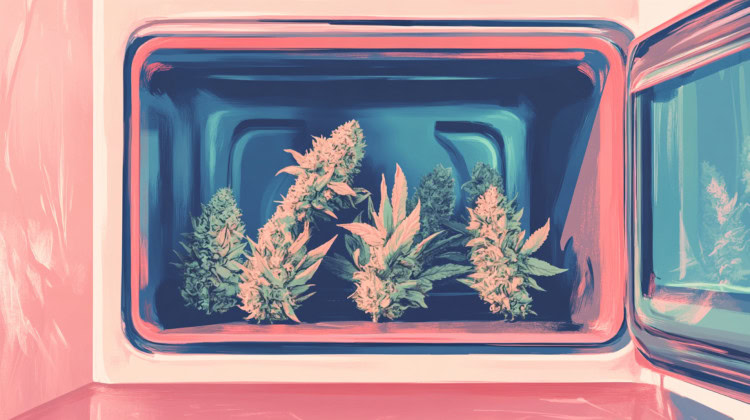
Can you? Yes.
Should you? No.
In theory, any heat source can create decarboxylation. From sunlight to oven lights, these can convert THCA to THC. But, as the evidence suggests, not every option delivers equal results.
Microwaving lacks the control and/or consistent heating needed for decarbing. Further, a microwave cannot hold the low, steady temperature required to activate THC without diminishing its quality.
A few seconds of microwaving may work without burning the bud. But that time will not likely fully decarb the cannabis.
Does Microwaving Cannabis Make It Stronger?
In rarer cases, perhaps. But more often than not, the microwave will not enhance plant potency.
Since heat is integral to converting THCA into THC, some may assume that quick, intense heat boosts potency and promotes efficient decarbing. But that’s not accurate. Proper decarboxylation requires heating cannabis at low temperatures, gradually increasing over time, approximately 30-45 minutes in many cases.
Blasting buds with microwave temperatures often negates any of the bud’s qualities by rapidly, and sometimes excessively, heating the plant.
What Effect Does Microwaving Cannabis Have?
Microwaving does not reliably increase potency or properly decarb cannabis. It ruins otherwise good flower, specifically:
- Dries It Out: Microwaves rapidly evaporate moisture, leaving overly dry cannabis in some areas of the bud or in its entirety. The result is a harsh-to-smoke flower lacking flavor and THC.
- Degrading Cannabinoids: Uneven heating may lead to partial decarboxylation and/or overheating, leading to degraded cannabinoid content and reduced potency.
- Altered Taste: A microwave can scorch critical plant compounds, like terpenes, producing unwelcomed flavors.
Conclusion
While the chemical processes that make decarboxylation necessary can seem complicated, the way to decarb at home is surprisingly straightforward. And once you have your decarbed weed in hand, nothing is stopping you from making your very own delicious DIY cannabis edibles!
The information in this article and any included images or charts are for educational purposes only. This information is neither a substitute for, nor does it replace, professional legal advice or medical advice, diagnosis, or treatment. If you have any concerns or questions about laws, regulations, or your health, you should always consult with an attorney, physician or other licensed professional.

